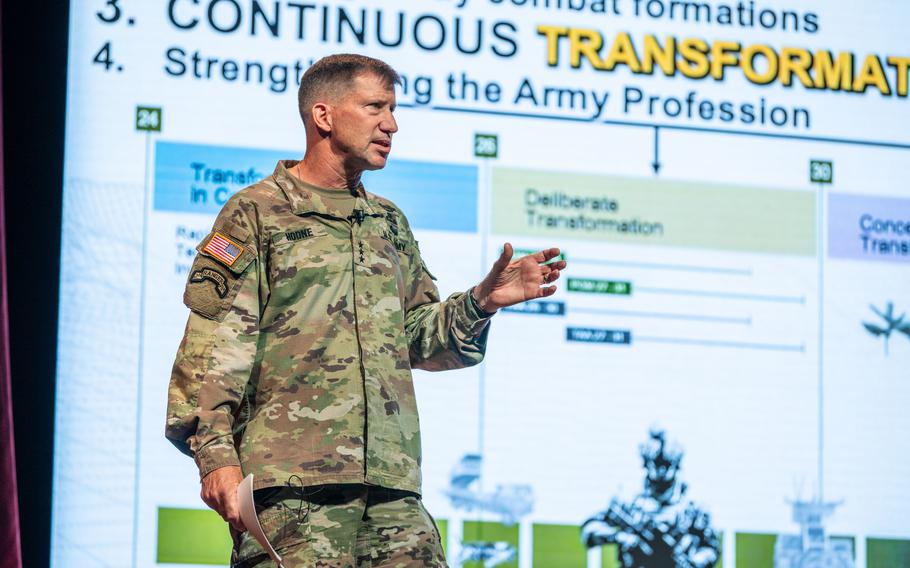
Lt. Gen. David M. Hodne was nominated by President Donald Trump to lead the Army’s yet-to-be-activated Transformation and Training Command in Austin, Texas. (U.S Army)
AUSTIN, Texas — Lt. Gen. David M. Hodne was nominated by President Donald Trump to lead a new Army command expected to stand up later this year through the merger of Army Futures Command and Training and Doctrine Command, the Defense Department announced Friday.
Hodne was nominated for promotion to four-star general and the position of commander of the Army Transformation and Training Command, which will be headquartered in Austin. He has served as deputy commander of futures and concepts for a Futures Command office at Joint Base Langley-Eustis, Va., since January 2024, which is also when he received his third star.
The Army is expected to release full details of the command consolidation in August but the service has confirmed the headquarters for the four-star leading the Transformation and Training Command will be in Austin, where the four-star who leads Futures Command is now located.
TRADOC is headquartered at Fort Eustis and said it expects some of its personnel and operations to stay in Virginia.
Each command has roughly 1,000 personnel in its respective headquarters.
Hodne’s time as a general has balanced between leading troops, leading the infantry schoolhouse, and shaping Army modernization and conceptualizing the demands of future warfighting. He also spent considerable time deployed after the 9/11 terrorist attacks.
He has served as commander of the 4th Infantry Division at Fort Carson, Colo., the Futures Command’s director of the Soldier Lethality Cross Functional Team and commandant of the Army Infantry School at Fort Benning, Ga., according to his Army biography.
He also served as a battalion commander in combat in Iraq with the 3rd Squadron of the 4th Cavalry Regiment and in Afghanistan with the 2nd Battalion of the 75th Ranger Regiment.
Hodne in September addressed the Maneuver Warfighter Conference at Fort Benning, where he described a three-phase approach Futures Command uses to shape the Army — near-term readiness improvements, deliberate modernization in the next decade, and long-term, concept-driven changes for 2040 and beyond.
“We are experimenting with the future force today, testing how new technologies can be integrated into existing systems to give us the edge in future conflicts,” Hodne told conference attendees.
His nomination to lead the new Transformation and Training Command will now go to the Senate for confirmation. The command could be activated as early as Oct. 1, the Army said.